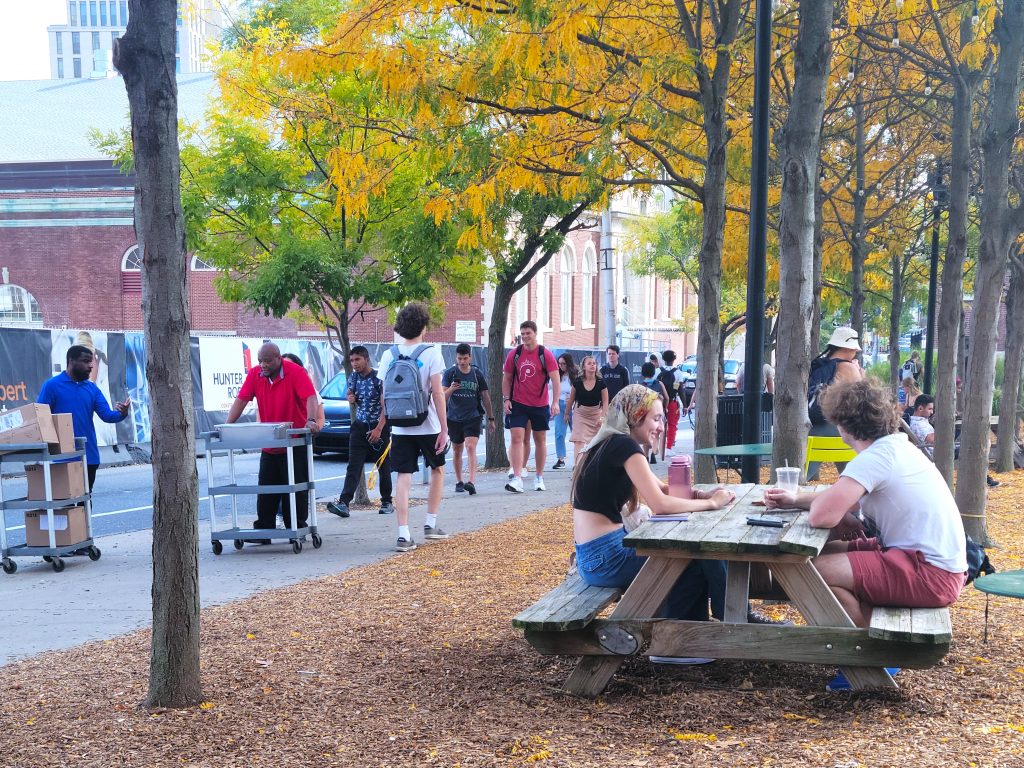
Drexel University’s anti-racism report reflects the positive changes and continual efforts to create a diverse environment for its students and staff.
Drexel’s Anti-Racism Task Force, established by President John Fry in 2020, is a committee of Drexel staff who aim to create an environment that encourages dialogue between privileged and underprivileged individuals while simultaneously leveling out the playing field. The goal is to ensure the campus is a safe space for everyone to coexist harmoniously.
The university continues to see changes, one being the Banner system, an information system connected to applying for a job, student employment and student enrollment, updating in order to allow students to identify with multiple races.
Along with this upgrade, there has been a general increase in representation of marginalized groups according to reports. Within Black/African American undergraduates there was about a 2 percent rise, being that it was 9.7 percent in 2018 and 12 percent in 2022. Within graduates, there’s been about a 1.7 percent uptake, jumping from 13 to 14.7 percent within the four years. The number of Drexel’s full time Black faculty increased by about 1 percent while the benefit-eligible staff proportion has decreased by 1 percent.
The ATRF have split up their research between two main points: culture and climate. According to the report, culture is defined as Drexel’s moral code in performance and their climate as how different groups are experiencing it.
In the second year the Office for Institutional Equity and Inclusive Culture, after establishing their 64 commitments, had spread these goals across 43 different administrative and academic units to which 41 had responded. That is an increase from 32 units in 2022, showing improvements as the year went on.
While there will always be academic and administrative personnel who take on these commitments, there is no real effectiveness until the target audience (students, staff, faculty) have been satisfied. In a survey conducted in 2021 by the Higher Education Data Service Consortium, when asked on a scale of 1- 5 how content they were with the environment of the campus (1 being discontent and 5 being very content), there was an average of 3.79 from the general population. Within that, the mean of Black/African responses was 3.48.
While there has been major headway, there is no success without some difficulties.
“All of our commitments aren’t gonna come to fruition, or haven’t come to fruition,” said Kim Gholston, the vice president and chief diversity officer in the ARTF. “We’re continuing to, to grow and develop and educate ourselves around the issues. . . we’re trying some things, we’re piloting a lot of things that we feel will move the needle on those commitments.”
Many of the 41 units have created activities that invite students to different workshops, book clubs, resource sharing and large discussions.
The Office of Diversity and Inclusion website showcases all events and corresponding dates..
For staff, 33 units have stated that they have created outlets to include them, some of which include highlighting the nature of contracts with union members and having ties to leadership in the Real Estate and Facilities.
Two additional commitments were called for attention. One of which was emphasizing the necessity to have anti-racism and DEI teachings at the forefront of learning to explain what exemplary behavior was like and to maintain them. Twenty-nine of the units have responded with reports of their training workshops, event dialogues, and have mentioned that they are open to instruction from the university. The shining example this year was the Dornsife School of Public Health’s method of incorporating all leaders in an anti-racism action plan.
The second point was creating a plan that closed the financial gap of minorities despite their advancement. Twenty-five units have responded to this, stating that they too have used this moment to report on the progress made, adding that they are “restating their commitment to revising the departments’ guidelines.”
All in all, this past year has seen improvements as more units on campus are taking commitments seriously in order to ensure that the Drexel community remains harmonious with one another and remains a place of safety and comfort for all who walk its campus.
“It’s important to have those 64 commitments to recognize the need for us to remain on this journey to be an antiracist university,” said Gholston. “It has also served as a foundation for us to not only recognize the needs of our black and brown community, but to any group that is underrepresented in any area of the university.”

